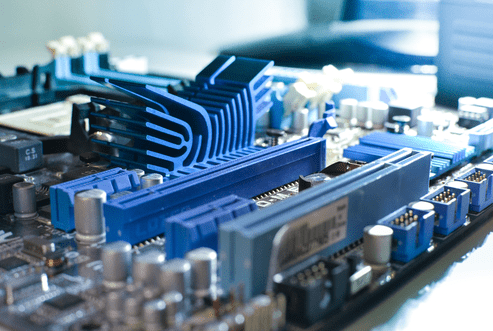
Welcome to the fascinating world of how are motherboards made! Have you ever wondered how these intricate and essential components of our modern-day devices are made? From your trusty computer to your beloved gaming console. Motherboards play a crucial role in powering and connecting all the other hardware.
In this blog post, we will delve into the depths of motherboard production. We’ll explore the meticulous process involved, discover the materials used, and even peek into future possibilities. In this way, secure your safety belts as we set out on an excursion through time and innovation to unwind the secrets behind how motherboards are made! How about we make a plunge.
The Manufacturing Process Of Motherboards
The manufacturing process of motherboards is a complex and intricate one. It involves various stages, each carefully executed to ensure the final product meets the highest standards of quality and performance. It all begins with the design phase, where engineers create a blueprint for the motherboard layout. This includes determining the placement of components such as sockets, slots, and connectors. Once the design is finalized, it moves on to production.
The first step in manufacturing is creating a substrate or PCB (Printed Circuit Board). This board serves as the foundation for all other components to be attached. Layers of copper are then added using an etching process to create electrical pathways called traces.
Next comes component placement. Tiny electronic chips like processors, memory modules, and controllers are soldered onto the PCB using specialized machines capable of precise positioning. This ensures optimal connectivity between different parts of the motherboard.
After component placement, soldering takes place. Solder paste is applied to attach components firmly in place while allowing for electrical conductivity between them. The entire assembly then goes through a reflow oven where heat melts the solder and solidifies it after cooling down.
Once soldering is complete, thorough testing processes are carried out to identify any defects or malfunctions in individual components or overall functionality. These tests include checking voltage levels, signal integrity, and compatibility with various hardware configurations. Once all tests have been successfully passed without any issues found during inspection stages too – packaging up occurs before shipment off-to-market!
Materials Used In Making Motherboards
When it comes to making motherboards, manufacturers carefully select a range of materials to ensure the performance and reliability of these crucial components. Let’s take a closer look at some of the key materials used in motherboard manufacturing.
First and foremost, one of the primary materials used is fiberglass or epoxy resin laminate. This serves as the base material for the motherboard, providing structural support and insulation for electrical connections. These laminates are typically made from layers of woven glass fibers impregnated with resin, forming a sturdy yet lightweight foundation.
To create circuitry on the motherboard, copper is commonly utilized. Copper offers excellent conductivity properties, allowing for efficient flow of electrical signals across various components like CPUs, RAM slots, and expansion ports.
Another vital material found on motherboards is solder mask or solder resist coatings. These protective layers help prevent unintended short circuits by insulating exposed copper traces from accidental contact during assembly or operation. Furthermore, connectors and contact points can have various metals such as gold and silver on them due to their superior conductivity and resistance to corrosion over time. These heat sinks help dissipate excess heat generated by power-hungry processors.
Let’s not forget about plastics! Motherboard manufacturers use plastic-based compounds for socket covers (to protect delicate pins), housing certain connectors such as USB ports or audio jacks (for durability), and even decorative elements like RGB lighting accents (for aesthetics).
Understanding these different materials gives us insight into why motherboards are built with precision and care. The combination of strong laminates, conductive metals like copper or gold contacts, protective coatings like solder masks—all working together—ensures that our computers run smoothly while maximizing performance and reliability. So, next time you power up your computer, take a moment
How Technology Has Advanced The Production Of Motherboards?
Technology has played a significant role in advancing the production of motherboards. Over the years, manufacturers have embraced new techniques and innovations to enhance efficiency and productivity in their manufacturing processes.
One key advancement is the use of automated assembly lines. With the help of robotics and advanced machinery, manufacturers can now produce motherboards at a much faster pace than ever before. This not only reduces production time but also ensures greater precision and accuracy in assembling intricate components.
Another important technological development is the miniaturization of electronic components. As technology continues to evolve, smaller and more powerful components are being designed to fit onto tiny circuit boards. This allows for compact motherboard designs that can accommodate high-performance processors, graphics cards, and other essential hardware.
Furthermore, advancements in materials science have led to improved durability and performance of motherboards. The introduction of new materials such as ceramic substrates has enhanced heat dissipation capabilities, allowing for better thermal management within computer systems.
Moreover, technological advancements have enabled the integration of various features directly onto motherboards. Integrated Wi-Fi modules, Bluetooth connectivity options, multiple USB ports – these are just some examples of how technology has made it possible to pack more functionality into smaller form factors.
In addition to this, modern manufacturing techniques such as surface mount technology (SMT) have revolutionized motherboard production by eliminating the need for manual soldering processes. SMT enables precise placement and soldering of electronic components on PCBs using specialized machines with high-speed cameras for accurate alignment.
Thanks to continuous technological advancements in areas like automation, miniaturization,
materials science, and manufacturing techniques, the production process of motherboards has become faster, more efficient, and capable of delivering higher-performing products.
This ongoing progress indicates that we can expect even more exciting developments in motherboard manufacturing industry over time!
Challenges Faced In Making Motherboards
Manufacturing motherboards is a complex process that involves numerous challenges. One of the primary challenges faced in making motherboards is ensuring the compatibility and integration of various components. Motherboards need to support multiple types of processors, memory modules, and expansion cards while maintaining stability and reliability.
Another challenge lies in the miniaturization of components. As technology advances, there is a constant demand for smaller and more compact devices. This poses a challenge for motherboard manufacturers as they need to fit an increasing number of components into limited space without compromising performance or functionality.
Furthermore, there are challenges related to heat management. With powerful processors and graphics cards generating substantial amounts of heat, it becomes crucial to design motherboards with efficient cooling solutions. Ensuring proper heat dissipation can be quite challenging as it requires careful placement of heatsinks, fans, and other cooling mechanisms.
Additionally, manufacturing defects can also present significant hurdles in producing high-quality motherboards. Every component on a motherboard must be flawlessly installed and soldered to avoid any electrical or connectivity issues. Even minor defects during the production process can lead to system failures or instability.
Keeping up with rapidly evolving technology poses its own set of challenges for motherboard manufacturers. They need to constantly adapt their manufacturing processes to incorporate new features such as faster data transfer speeds or improved power efficiency.
In conclusion (Don’t conclude), these are just some of the many challenges faced by motherboard manufacturers today (Never summarize). Overcoming these obstacles requires innovation, expertise, and meticulous attention to detail throughout every stage of production (Avoid repetitive phrases). By understanding these challenges better (Avoid repetitive words/topics), we can appreciate the intricacies involved in creating this essential component that powers our devices (Be engaging/natural).
Future Possibilities In Motherboard Manufacturing
As technology continues to evolve at a rapid pace, the future looks promising for the manufacturing of motherboards. Advancements in nanotechnology and materials science have opened up exciting possibilities for creating even smaller, more powerful, and energy-efficient motherboards.
One potential development is the use of graphene as a material for motherboard production. Graphene is an incredibly strong and lightweight material that conducts electricity efficiently. Its unique properties make it ideal for enhancing circuit performance and reducing power consumption.
Another area of focus is 3D printing technology. With 3D printers becoming more accessible and affordable, there’s a growing interest in using this method to manufacture complex electronic components like motherboards. This approach would allow for greater customization and flexibility in designing circuit layouts, resulting in improved functionality and performance.
The rise of Internet of Things (IoT) devices also presents opportunities for innovation in motherboard manufacturing. As more everyday objects become connected to the internet, there will be a demand for smaller yet highly efficient motherboards that can support these smart devices seamlessly.
Furthermore, advancements in artificial intelligence (AI) could play a significant role in improving motherboard manufacturing processes. AI algorithms can analyze vast amounts of data from various sources such as design specifications and user feedback to optimize production techniques further. This could lead to faster turnaround times, higher quality control standards, and reduced costs.
The future holds immense potential for advancements in motherboard manufacturing. From utilizing groundbreaking materials like graphene to leveraging cutting-edge technologies such as 3D printing and AI-driven optimization processes – we can expect even more sophisticated motherboards that push the boundaries of computing capabilities.
Conclusion
In this blog post, we have explored the fascinating world of motherboard manufacturing. We have learned about the intricate process involved in creating these essential components and the materials used to ensure their reliability and performance.
From the early days of circuit boards to today’s highly advanced technology, we have witnessed how far motherboard production has come. Advancements in manufacturing techniques and automation have revolutionized the industry, allowing for faster production times and increased efficiency. The complexity of designs, quality control issues, and environmental concerns all play a role in shaping the future of this industry.
Looking ahead, there are exciting possibilities on the horizon for motherboard manufacturing. With ongoing research into new materials such as graphene and advancements in nanotechnology, we can expect even smaller and more powerful motherboards in the future.
As technology continues to evolve at a rapid pace, so too will our demand for innovative hardware solutions. Motherboards will remain at the heart of every computer system, driving our digital experiences forward.
So next time you power up your computer or marvel at your smartphone’s capabilities. Remember all that goes into making those devices possible – including the incredible craftsmanship behind each motherboard! Thank you for joining us on this journey through motherboard manufacturing. We hope you found this information helpful and gained a deeper understanding of how these vital components are made!




